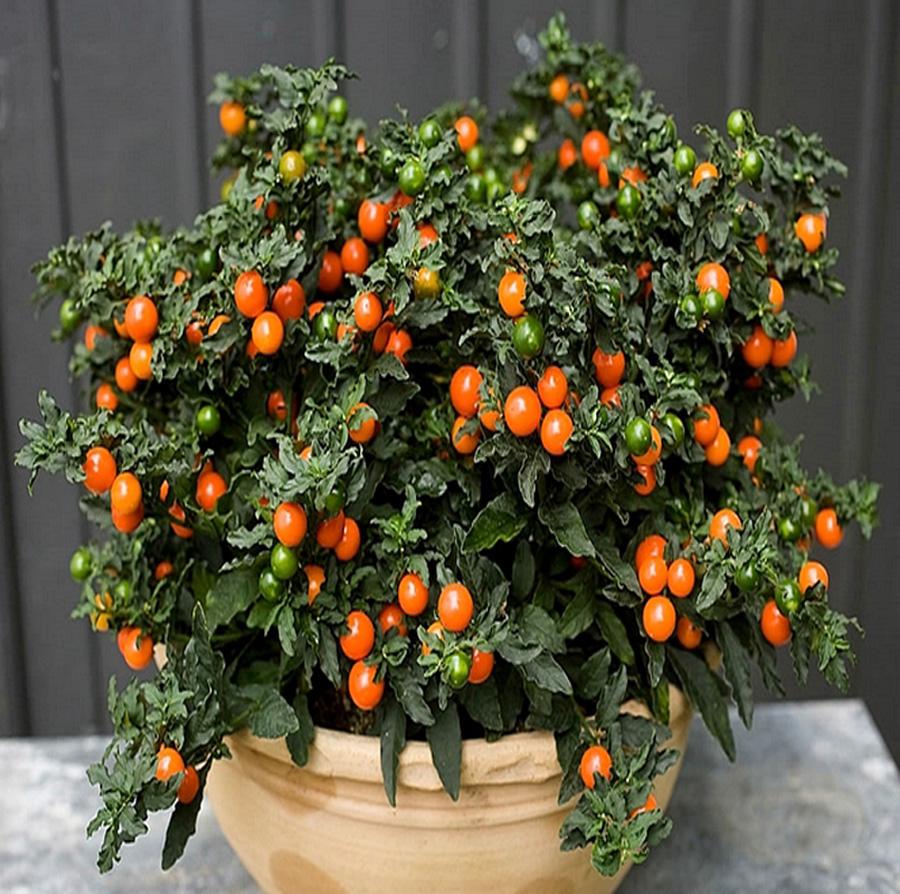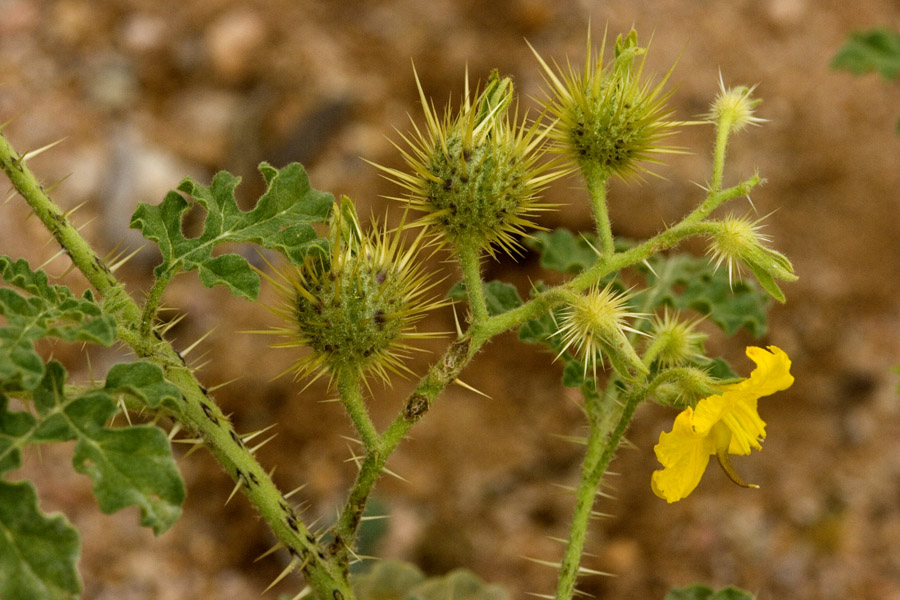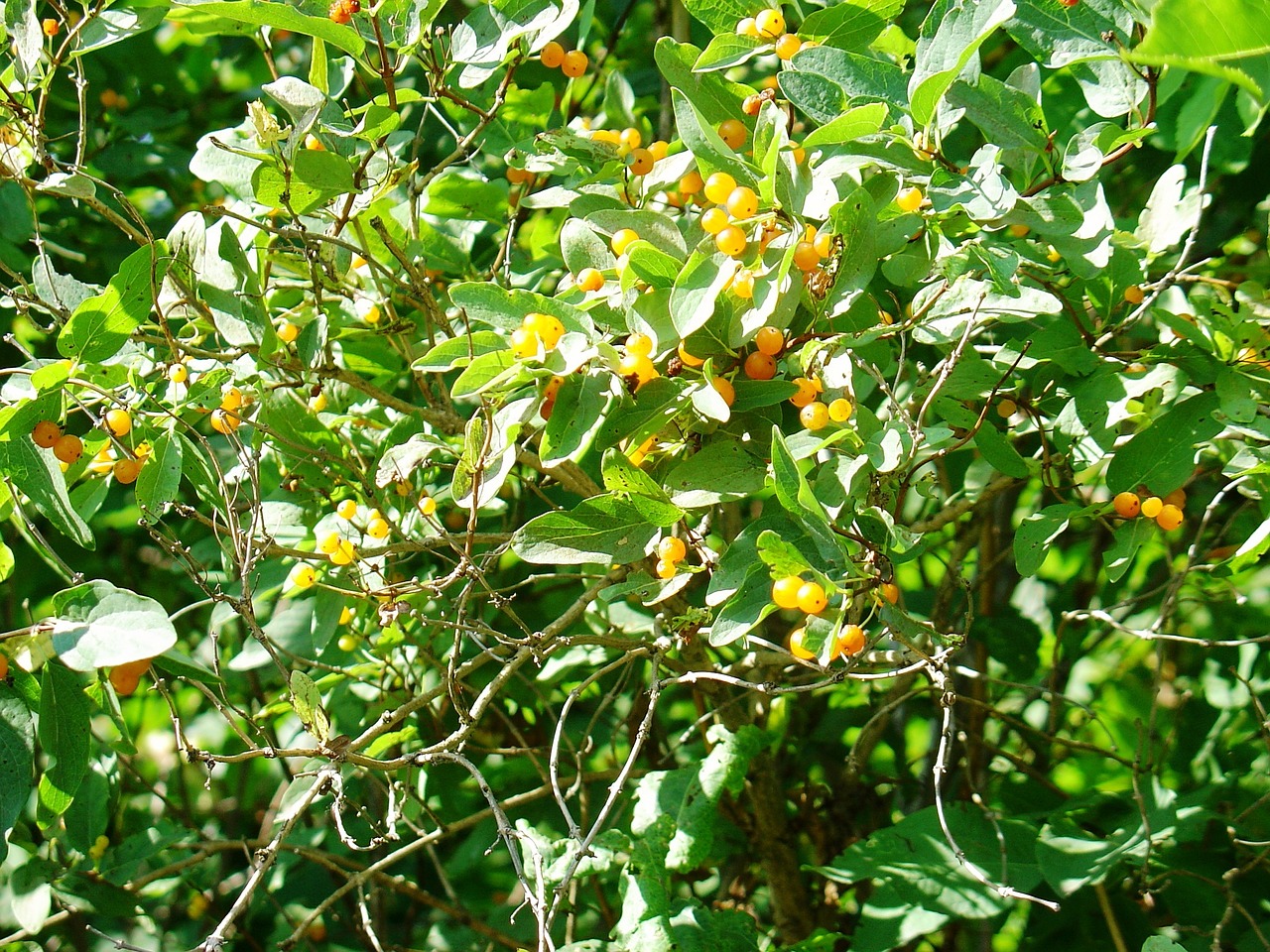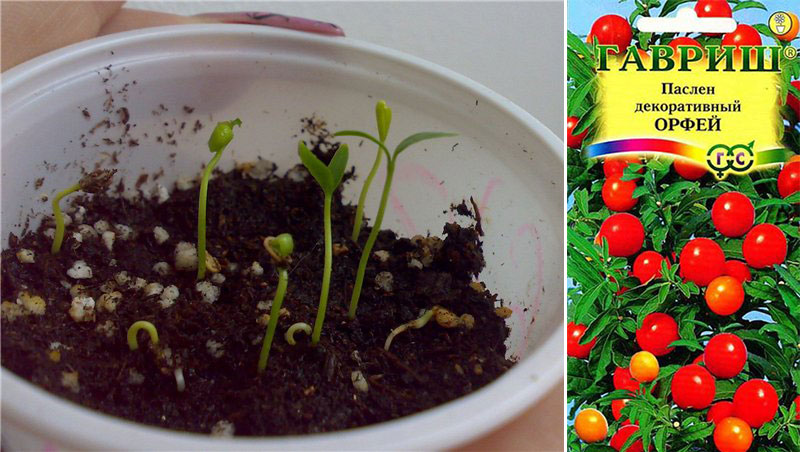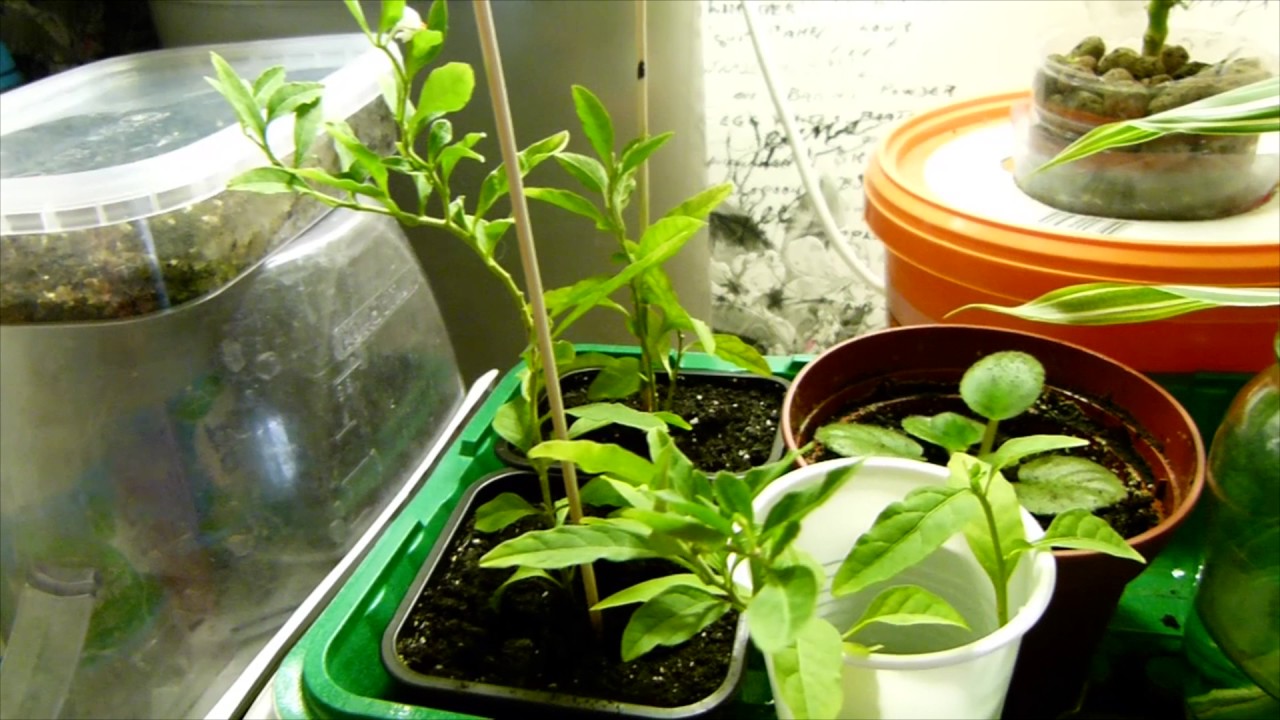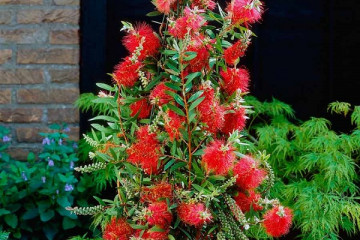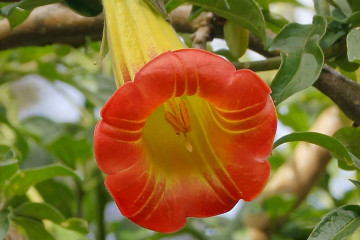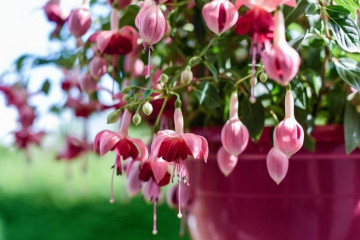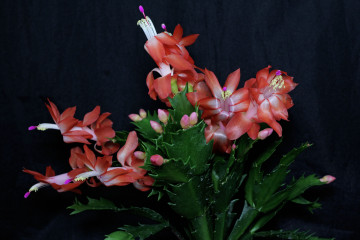Indoor nightshade: examples of care and the main varieties of plants
Content:
Many gardeners are familiar with the nightshade flower as an ornamental plant. Culture is not less appreciated for its medicinal properties. This is a very interesting plant, which can be a grass, shrub, tree, have a creeping, erect or recumbent stem, depending on the specific variety taken.
The decorativeness of nightshade lies not only in the fact that it blooms beautifully. During fruiting, the medicinal beautiful flower is covered with small fruits in the form of glossy balls. Since the fruits ripen unevenly, each berry can be colored in different colors: pale yellow, orange, dark red.
Main types
Indoor nightshade belongs to the Solanaceae family. Its most common types include the following.
Prickly nightshade
This variety is a weed that grows up to one and a half meters in height. The nightshade thorny has a straight and branched stem, dotted with yellowish thorns.
The leaves are oblong, pinnately dissected. The bush blooms with yellow flowers, which are mainly located in the upper part of the stem. Flowering occurs from June to early September. The nightshade plant begins to bear fruit in October. It is an annual and thermophilic crop that prefers loose soils. It is grown exclusively by seeds.
Nightshade yellow
Speaking about the varieties of culture, one cannot fail to mention the yellow nightshade. This bush grows on average up to half a meter, differs in spreading. The leaves of the variety are quite small, the flowers are white, they are formed in large quantities. The flowering period lasts almost throughout the summer. The fruits of the nightshade are quite small, sweet in taste, and yellow in color.
Other varieties
In addition to those listed, there are several types of nightshade, which are especially highly valued by flower growers. These include:
- a giant nightshade growing up to six meters in height and blooming not with single flowers, but with panicles;
- a variety of jasmine nightshade, growing under favorable conditions up to four meters with white flowers that strongly resemble jasmine;
- the Wendland nightshade, also reaching four meters in the wild in its homeland in the mountains of Central America;
- Zeafort nightshade, which is an evergreen shrub that blooms almost from the very beginning of spring until late autumn.
Home care
Most often, at home, they grow decorative false-pepper nightshade and some dwarf forms of homemade nightshade, reaching no more than 30 centimeters in height.
In order for the cultivation of nightshade as an indoor flower to be as successful as possible, the most comfortable conditions must be created for it. Although the bush is not particularly whimsical, certain rules and requirements will have to be followed.
Temperature
During the summer, the flower will be quite comfortable at room temperature. But it should not be kept on the windowsills on the south side. The bush will be too hot there.
In winter, it is recommended to keep the plant in cool conditions. The optimal temperature range will be from +12 to +15 degrees.
Top dressing
In order for the decorative nightshade to bloom and bear fruit abundantly enough for home care, it will need a large amount of nutrients.
Top dressing should be done in spring and summer twice a month. It is recommended to use any complex fertilizer intended for flowering plants.
In winter, the flower is either not fed at all, or they do it using half of the dosage recommended by the manufacturer and no more than once a month.
The soil
A suitable soil for this indoor plant with red berries is a soil mixture, which includes turf, peat soil, humus and sand. Everything is mixed in equal proportions, only humus can be included in the composition of the soil twice as much.
Watering
Systematic and abundant watering of ornamental shrubs is required during the period of intensive growth, and when the fruit is being formed. Watering should be done as the soil dries up.
In winter, the flower also needs to be watered, but much less often. Moreover, the lower the room temperature, the less watering will be required.
In addition to watering, the plant needs periodic spraying. The shrub reacts very favorably to high humidity, it should be maintained year-round. You can achieve the desired humidity indicator not only by spraying, but also by placing the flower pot in a tray with wet pebbles or expanded clay so that the bottom of the pot does not come into contact with water. If the air in the room where the nightshade is grown is too dry, the shrub will not bear fruit well.
Transfer
Experts recommend replanting any nightshade variety in early spring, before the flower begins to actively grow. The soil for transplanting must be sure to choose a loose and well-permeable air. It is necessary to make drainage, for example, from expanded clay. Without it, caring for the plant will be useless - excess moisture will not be removed from the pot well enough, and the root system may begin to rot.
When transplanting, a flower representing the Solanaceae family is cut by about a third, only after that is transplanted to a new place.
Pruning
For indoor nightshade, full-fledged care will not work without periodic pruning. This procedure is performed mainly when the plant stops bearing fruit or grows too much. Pruning significantly improves the overall condition of the nightshade.
It is important to shorten the stem - this will activate the growth of the lateral branches. Pinching the tips will lead to a similar result.
Reproduction methods
Indoor plant propagation is carried out in two main ways: by seeds or by means of cuttings.
Growing from seeds
Growing indoor nightshade from seeds will require some leafy soil. It is carefully sifted, poured into a container. The seeds are carefully laid out on the surface of the soil and sprinkled with sand in a small amount. Then it remains only to slightly moisten the ground and move the container with seedlings to a warm place.An important condition that must be met for the successful germination of planting material is that the container with seeds must be covered with glass or plastic wrap. On average, seedlings begin to appear two weeks after planting. As the seedlings grow, it will be necessary to dive twice, after which the young seedlings can be transplanted to a permanent place of growth.
Rooting cuttings
No less often than seeds, nightshade culture is propagated by rooting stem cuttings. During the spring pruning period, cut branches do not need to be thrown away. Select the strongest of them and try to root them. For this, the sections of the stem are placed in a mixture of peat and sand or vermiculite until roots appear.
As soon as the first roots appear at the cutting, they are seated in separate pots. After transplanting, it is enough to pinch the plant to improve branching.
In general, this flower will fit into almost any interior and will be a wonderful decoration for an apartment, home or office. The most important thing is to handle it with care and to look after it properly.
